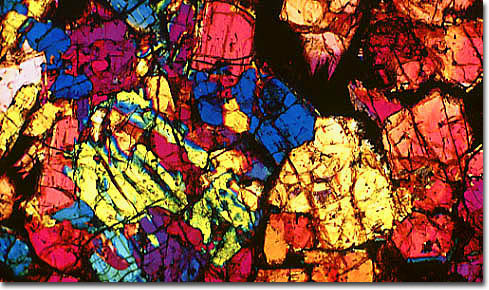|
Lunar meteorites, sometimes referred to as lunaites, are meteorites that come from the moon. Ironically, these meteorites were likely formed when the moon was itself struck by a meteorite or other large object, such as a comet. Any meteorites formed in this manner would not immediately travel to the Earth, but could begin orbiting the sun or enter into the Earthís gravitational field, taking as many as several hundred thousand years before actually coming into contact with the planetís surface. Lunar meteorites comprise only an extremely small portion of the meteorites that have been found on Earth. The identification of their lunar origin is relatively certain, however, due to comparison with lunar rocks collected during the Apollo space missions.
|
